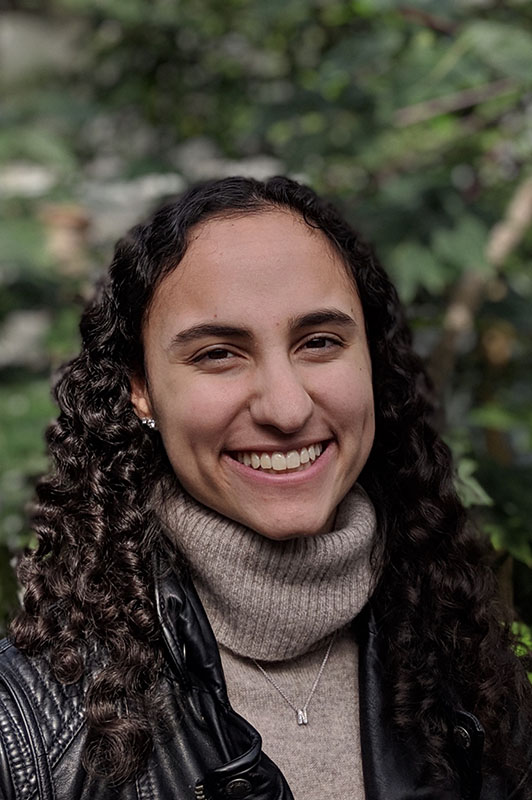
I love knowing the math behind engineering equations, and being able to look more deeply into how the world around us works.
University of Maryland (UMD) junior Nadia Zaleski likes to understand how things work—what components are involved, and what mechanical and physical laws make them operate in predictable ways. It’s an interest that has led her to combine a mechanical engineering major with a math minor, providing her with a particularly strong blend of skills.
“I love knowing the math behind engineering equations, and being able to look more deeply into how the world around us works,” Zaleski said. “I also appreciate the tangible aspect of mechanical engineering—very often, you’re working with things you can physically touch and see.”
Today, Zaleski is drawing on her strong math background to help a team of UMD and University of Maryland Medical System (UMMS) researchers tackle one of today’s most critical problems: helping improve outcomes for patients with severe COVID-19 cases. As a student assistant to mechanical engineering professor Hosam Fathy, Zaleski has been modeling new ventilation methods that can provide patients with the oxygen they need to survive, without causing damage to their lungs.
“The purpose is to reduce ventilator-induced injury,” Zaleski said of the project, in which Fathy’s team is providing engineering support for a system being developed by UMMS surgeon Joseph Friedberg.
Zaleski, who was tapped for the project after her outstanding performance in a statistical methods course, spent the summer using MATLAB to build her model and then feed it with data obtained by the UMD/UMMS team during experiments in August.
A member of the Alpha Omega Epsilon engineering sorority, and a participant in Alumni Cup teams at the A. James Clark School of Engineering, Zaleski is beginning to chart her career trajectory—including by taking on a technology entrepeneurship minor, in addition to her math minor and mechanical engineering major.
“I’d like to go into biomechanics,” she said. “That’s part of the reason why I joined this project—I saw that it had a biological aspect to it. I think that something related to prosthetics would be of particular interest.”
“On a longer-term scale, I’d like to move in the direction of project management. I first want to get the hardcore engineering experience, and then be prepared for management roles,” Zaleski said.
Top